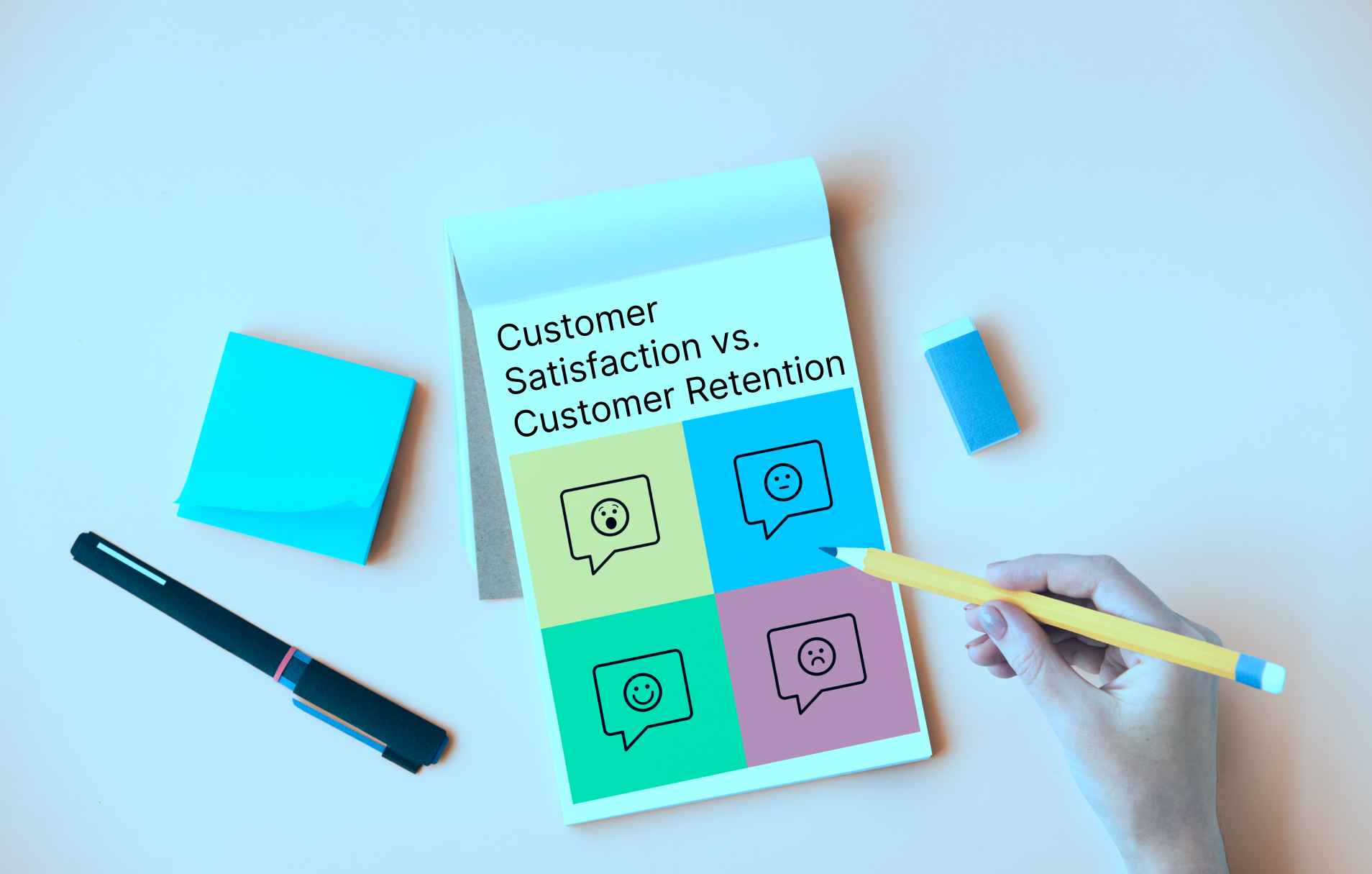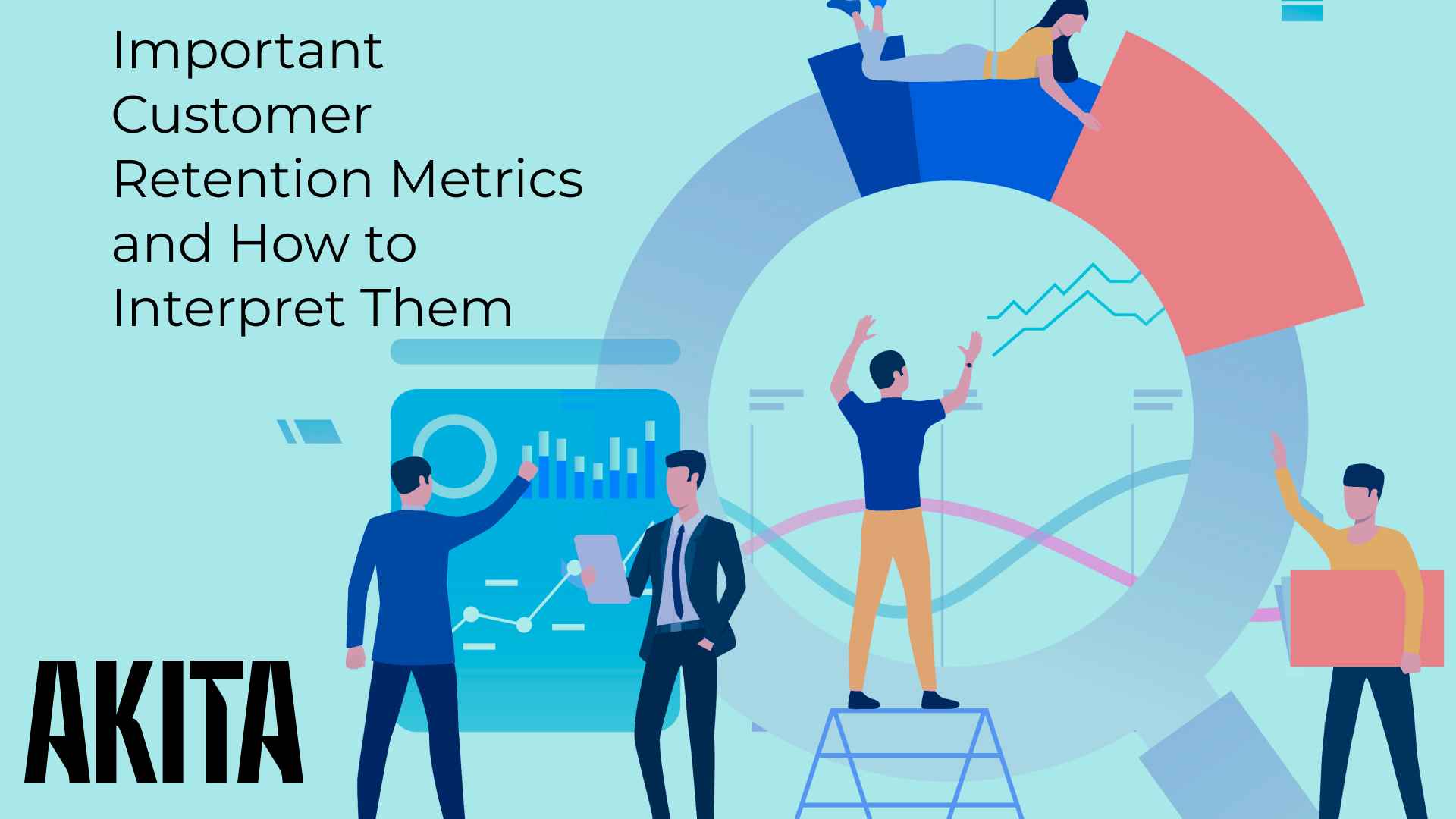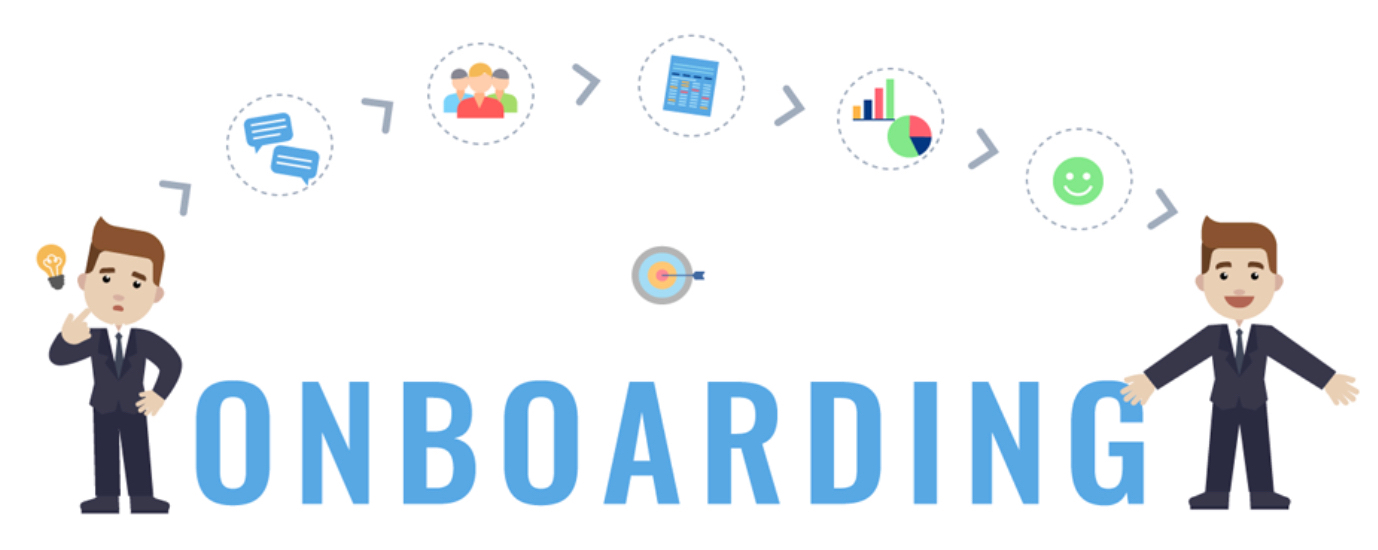What is the Difference Between Customer Satisfaction and Customer Retention?

Simply put, while measurable, customer satisfaction is subjective and experiential. Retention, however, is an objective, observable, and measurable phenomenon.
You either retain a customer or you don’t. It’s clear.
The satisfaction a customer feels, however, can change due to a real issue with the software or how that customer is being supported, but it can also change based on what that customer had for lunch or if the school pickup was stressful 😏.
That is, of course, not to say that changing customer satisfaction doesn’t have any real world consequences or that both it and retention are not connected.
In this post, we will review both phenomena independently and also investigate how they relate. We will also look at some tips for improving them both.
What is Customer Satisfaction?
Customer satisfaction reflects the user’s perception of the SaaS platform’s ability to meet their needs and expectations. In other words, it represents the level of satisfaction and fulfillment when engaging with the SaaS solution.
Let’s see the key segments of customer satisfaction:
- Product functionality: User satisfaction with the features and overall performance of the SaaS software.
- User experience. The user experience (UX) shows satisfaction with the navigation, design, and overall usability of the software.
- Derived value: The way your customers perceive a product’s value compared to its cost, features, and usefulness.
- Customer support: Responsiveness, quality, and efficiency of customer service offered by a company.
- Feedback: A business’s responsiveness to user’s feedback and its ability to improve based on the insights gained.
Customer satisfaction indicates the overall health and quality of the relationships between your customers and your company, so striving to improve satisfaction levels is essential for reducing churn and fostering endurable, long-term relationships.
What is Customer Retention?
Customer retention and customer satisfaction should function together in harmony to ensure business growth and sustainability.
Customer retention refers to the company’s ability to retain its customers over a specific period of time. Its metrics show the percentage of customers who continue to pay for your products or services over time.
Now, let’s see the key aspects of customer retention in SaaS:
- Subscription renewals: The correlation between customer satisfaction and retention lies in their abilities to answer customer demands and motivate them to continue using the software beyond the initial sign-up.
- Continuous engagement: Customer retention focuses on fostering continuous usage and satisfaction among existing customers to encourage prolonged relationships.
- Reduced churn: If your customer retention efforts are effective and well-thought-out, they can minimize churn rates.
- Satisfaction and value: Customer retention should provide expected value consistently and continually to meet customer expectations and keep them happy and satisfied. This is another correlation between customer retention and customer satisfaction.
Customer satisfaction and customer retention are both crucial for long-term success. The effect that customer satisfaction strategies have on retention involves ongoing engagement, addressing customer needs, and continually improving the services to exceed customer expectations.
This is why it is crucial that both customer retention and satisfaction strategies have the same objective in mind – understanding your customers’ needs and finding effective ways to meet them. To know how to indulge customer’s wishes and preferences, you first need to perform customer segmentation.
This is precisely where customer success platforms like Akita can help you. Akita comes with high-edge segmentation options that allow you to segment your customers based on any trait you find crucial, analyze and monitor their metrics, and include automatic triggers when the account is not performing as expected. By streamlining all your customer data into a single platform, you are allowing all team members to stay updated on the accounts’ performances and act adequately when necessary. Also, this is how you can get a full overview of each customer and adapt your customer satisfaction and retention strategies to each and every one of them.
The Relationship Between Customer Satisfaction and Retention
By now, you probably understand what the difference between customer satisfaction and customer retention is, but let’s see how they are related.
As we already defined both terms, let’s explore what they are mainly focused on. Customer satisfaction centers in the present experience evaluating whether the SaaS solution meets immediate customer needs and satisfies user expectations when it comes to functionality, support, usability, etc. On the other hand, customer retention focuses on a long-term perspective and reflects the company’s efforts to nurture ongoing relationships, satisfaction, and loyalty.
If the customer satisfaction strategies don’t show much effectiveness, there is a chance that they may have a negative impact on customer retention metrics. To assess customer satisfaction metrics, you should gather customer feedback through surveys and consider direct user interactions to understand the level of satisfaction with your software’s performance or service quality. On the other hand, customer retention metrics show the percentage of customers retained over a specific period of time, which helps you learn the rate at which users continue using their subscriptions.
Still, both customer satisfaction and retention metrics play crucial roles in ensuring sustained success and growth for a SaaS business, just with different scopes and focuses.
Tips to Improve Customer Satisfaction and Retention
Hopefully, we helped you get an answer to the question “What is the connection between customer satisfaction and retention?” by now. Still, let’s dive even deeper and provide you with some first-hand tips on how to increase customer satisfaction and retention.

- Seamless and personalized onboarding: Successful onboarding is a first step towards a long-term customer relationship. That is why it is crucial to create personalized onboarding experiences for each customer, including guided tours, tutorials, and assistance to help customers get started easily and effectively.
- Continuous value delivery: Introduce new features and updates regularly based on user feedback to maintain product relevance and drive more engagement.
- Superior customer support: Offer proactive customer support, ensuring rapid resolution of issues to reduce friction.
- Customizable features: Offer settings or features that allow users to personalize their experience.
- Personalized communication: Share useful tips and resources via emails, newsletters, or in-app messages.
- Feedback loop: Seek and leverage user feedback to improve the products continuously.
- Loyalty programs: Implement various exclusive loyalty programs to reward your most loyal customers and motivate them to continue using your services.
- Cohort analysis: Analyze user behavior and retention metrics in cohorts to identify patterns. Segment your users and proactively engage with them to prevent the churn.
Can Akita help measure and improve levels of customer satisfaction and retention?
It can!
Akita can ingest CSAT results from a number of software solutions that facilitate the capture of CSAT feedback. It can then identify negative results and/or track downward trends in Customer Satisfaction. The platform can then be used to alert a company representative to engage with the customer to help identify the issue and drive satisfaction upwards. Even better, an automated playbook can be triggered to deal with this risk (or many others).
Akita segments are very powerful, and multiple sources of data can be interrogated using Akita’s filters to identify potential churn risk and apply strategies to mitigate that risk and therefore maintain or improve customer retention levels.
In the Akita segment (below), 3 filters have been applied (marked in red):
- CSAT is less than 40%
- Usage has dropped 5% in the past 7 days
- Company NPS (Net Promoter Score) is less than 0.
Identifying six customers at risk of churn.
Conclusion
Ultimately, businesses that strike a balance between ensuring immediate satisfaction (customer satisfaction) and cultivating lasting relationships (customer retention) can position better in the over-saturated SaaS market by fostering positive user experiences and long-term relationships. Use Akita to aggregate customer data from various sources and leverage it to deliver personalized experiences and solutions. This is how you can create stronger customer relationships, improve customer loyalty, and ultimately increase customer satisfaction and retention.
Frequently Asked Questions
How do these metrics impact SaaS business success differently?
Customer satisfaction influences immediate perception, while customer retention impacts long-term revenue streams and drives sustained growth.
Is customer retention vital in SaaS?
Yes! Due to the subscription-based model, the success of a SaaS business is measured through its ability to retain customers and encourage renewals.
Can a business have high customer satisfaction but struggle with customer retention?
Yes, a business might have high satisfaction scores for individual interactions but fail to maintain long-term relationships.




